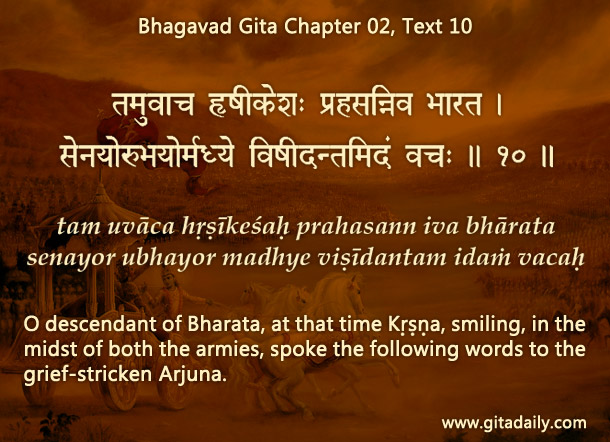“Don’t judge a book by its cover” is almost a truism. Yet it has special relevance for the Bhagavad-gita because its cover can intrigue as well as beguile, for it reveals as well as conceals its content.

Of course, the Gita as an ancient text hasn’t always had a fixed cover. The tradition revered sacred texts like the Gita, so the parchments that comprised the text were encased in a holy cloth, sometimes without any covering image. The cover became especially prominent after the Gita became mass published a few centuries ago. More often than not, the Gita’s cover features its setting: Krishna and Arjuna on the chariot in the middle of the Kurukshetra battlefield (02.10).
The setting is intriguing – the idea of a philosophical conversation right before a battle in the midst of the warring armies captivates the human imagination. Yet this book cover doesn’t even begin to cover the scope of the Gita’s message. This timeless classic is also placeless – that is, its message is not limited to its setting. Far from being a war manual, as the cover might suggest, it is a universal guide for living.
The Gita’s central message (02.11 – 18.72) doesn’t refer to the war more than a dozen times, underscoring that its focus is not on the war. It answers fundamental questions about our identity and destiny by revealing a magnificent vision of existence. That endearing vision centers on an all-attractive, all-loving Supreme Person who is the fulfillment of our innermost longings for lasting happiness and enduring love. The Gita’s culmination is an inspiring call for pure spiritual love as the best pathway to life’s ultimate success.
Those who explore the Gita are in for an intellectual and spiritual feast that can nourish and enrich them lifelong, indeed, for all of eternity.
Explanation of article:
Listen audio


Leave A Comment